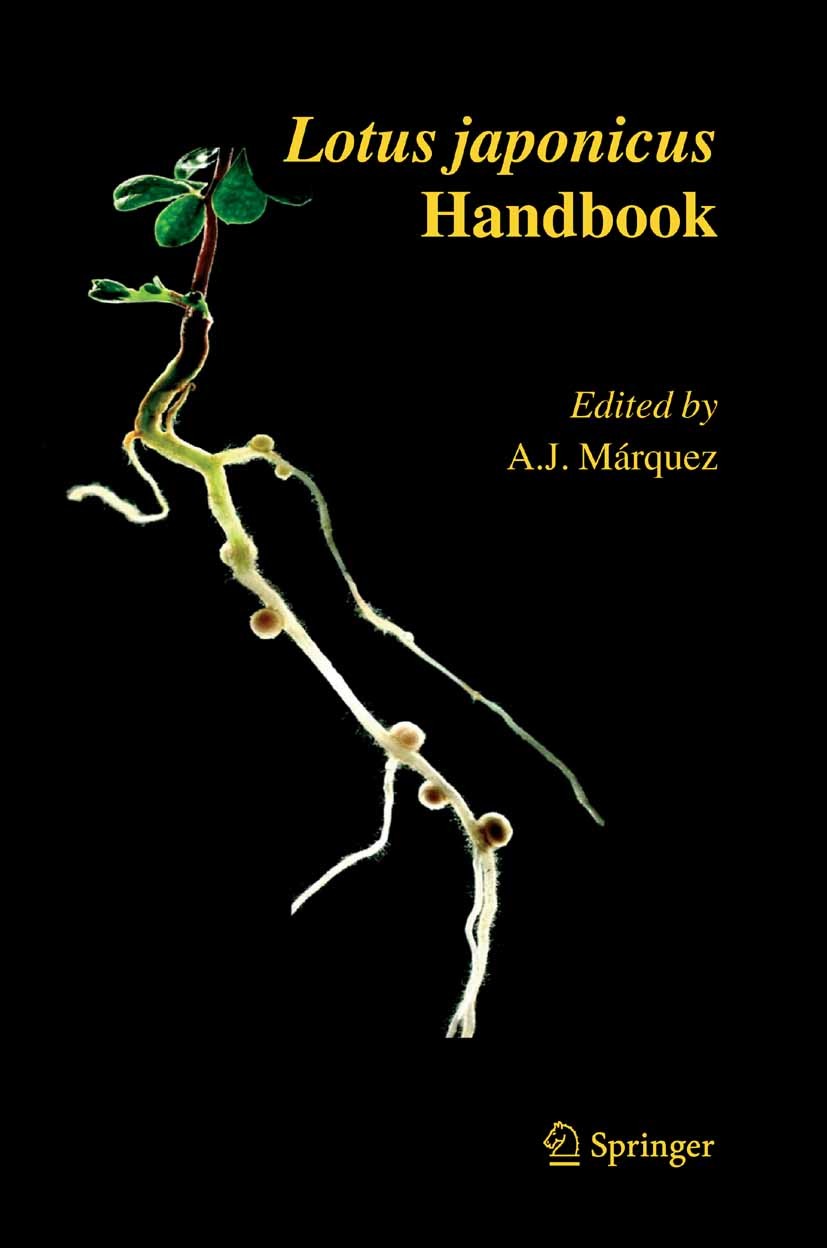| 書(shū)目名稱 | Lotus japonicus Handbook | | 編輯 | Antonio J. Márquez | | 視頻video | http://file.papertrans.cn/589/588694/588694.mp4 | | 概述 | Basic information and methodology for studying a leading model plant.First comprehensive and useful collection of in vivo and in vitro protocols for working with this model legume.Authors are key figu | | 圖書(shū)封面 |  | | 描述 | .Legumes are very important plants playing a central role in biological research. They are a key component of sustainable agricultural systems because of symbiotic nitrogen fixation and other beneficial symbiosis with mycorrhizal fungi. Studies on most of the major leguminous crops are hampered by large genome sizes and other disadvantages which have hindered the isolation and characterisation of genes with important roles in legume biology and agriculture. For this reason Lotus japonicus was chosen as a model species for legume research some ten years ago. Since then, many groups around the world have adopted Lotus as a model and have developed numerous resources and protocols to facilitate basic and applied research on this species. This handbook represents the first effort to compile basic descriptions and methods for research in Lotus, including symbiotic processes, cell and molecular biology protocols, functional genomics, mutants, gene tagging and genetic analysis, transformation and reverse genetic analysis, primary and secondary metabolism, and an exhaustive update of the scientific literature available on this plant. . | | 出版日期 | Book 2005 | | 關(guān)鍵詞 | Assimilat; DNA; Expression; RNA; enzymes; gene expression; genetics; metabolism; mutant; nitrogen; roots | | 版次 | 1 | | doi | https://doi.org/10.1007/1-4020-3735-X | | isbn_softcover | 978-90-481-6945-0 | | isbn_ebook | 978-1-4020-3735-1 | | copyright | Springer Science+Business Media B.V. 2005 |
The information of publication is updating

|
|
 |Archiver|手機(jī)版|小黑屋|
派博傳思國(guó)際
( 京公網(wǎng)安備110108008328)
GMT+8, 2025-10-5 23:19
|Archiver|手機(jī)版|小黑屋|
派博傳思國(guó)際
( 京公網(wǎng)安備110108008328)
GMT+8, 2025-10-5 23:19


